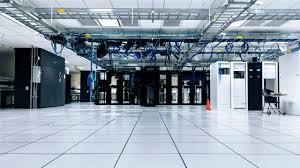Is automating analysis of networks beneficial? – By Aditya Abeysinghe

 What is a network analyzer?
What is a network analyzer?
A network analyzer is a device that is used to analyze a network. This device can be used to gather information on protocols or networks used, signal strength of a network etc. The method in which a network analyzer analysis networks is by measuring the response of a network’s devices. The network analyzer sends network signals to devices and then a user can see how these devices respond back to these signals in a radio frequency (RF) circuit. The two mostly used types of network analyzers are scalar network analyzers, which measure the amplitude of a radio frequency device, and vector network analyzers, which measure amplitude, phase and other values.
Limitations of hardware network devices
The main drawback of using hardware devices is that scalability is impossible without wiring new devices with the analyzer. A hardware device has a limit on the number of devices that it could connect. When this limit exceeds new devices need to be connected to analyze and control networking devices. This is a time consuming, costly and erroneous method which often requires networks to be made unavailable and configured.
Another drawback of using these devices is that analyzing a large network in a centralized method is impossible. With diverse network protocols, network types and varied types of user networks available today, analyzing networks in smaller networks and then analyzing it as a whole is often not feasible. Also, analysis of large networks should also require the capability to analyze additional information such as those for forecasting, anomalies and other analytical methods. These advanced methods of analyzing are often not feasible with decentralized methods of monitoring networks.
Using virtualized methods
Many networks are now using virtualized servers to handle most network functions. This method uses virtual servers to handle networks and network functions are handled in a virtual manner without use of hardware. Typical functionality that can be virtualized include analyzing network traffic data and virtual firewall-based traffic control. Since most functions of a network are handled using servers, storage of data related to networks as well as monitoring and controlling networks in a more centralized method is often less time consuming and costly. Also, scaling servers is often less costly and configuration of servers is often faster than configuring hardware.
Challenges of using virtualization for analysis
Virtualizing network functions using servers is a new technology for most network analysts. Therefore, knowledge related to server-based virtualization is required to handle and manage servers. Businesses often have to pay for experts in virtualization to manage servers and configure networks which often adds to the costs of maintaining server related functionality. Also, costs for servers are often pay-per-use. Thus, over time, the cost of using servers may be higher than costs of using hardware devices.
With virtualization, all data and network-related functions are managed centrally. Therefore, virtualized servers may be subjected to network attacks as they can be easily attacked over a network. Using network-related attacks, networks could be made unavailable to users and stored data could be stolen. Therefore, the possibility of attacking networks is high when servers are used to control functions of networks.
Image Courtesy: https://stlparteners.com/







